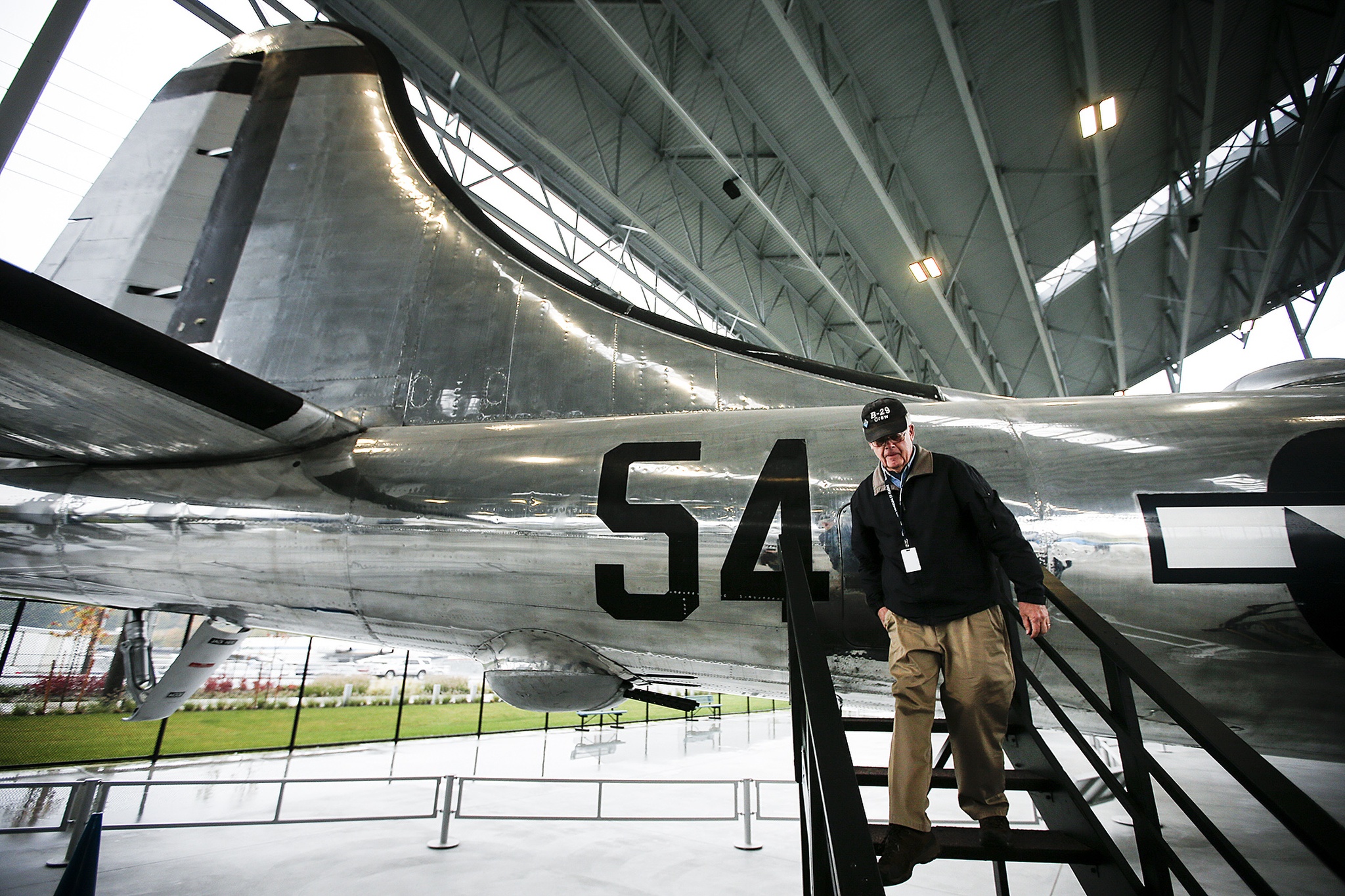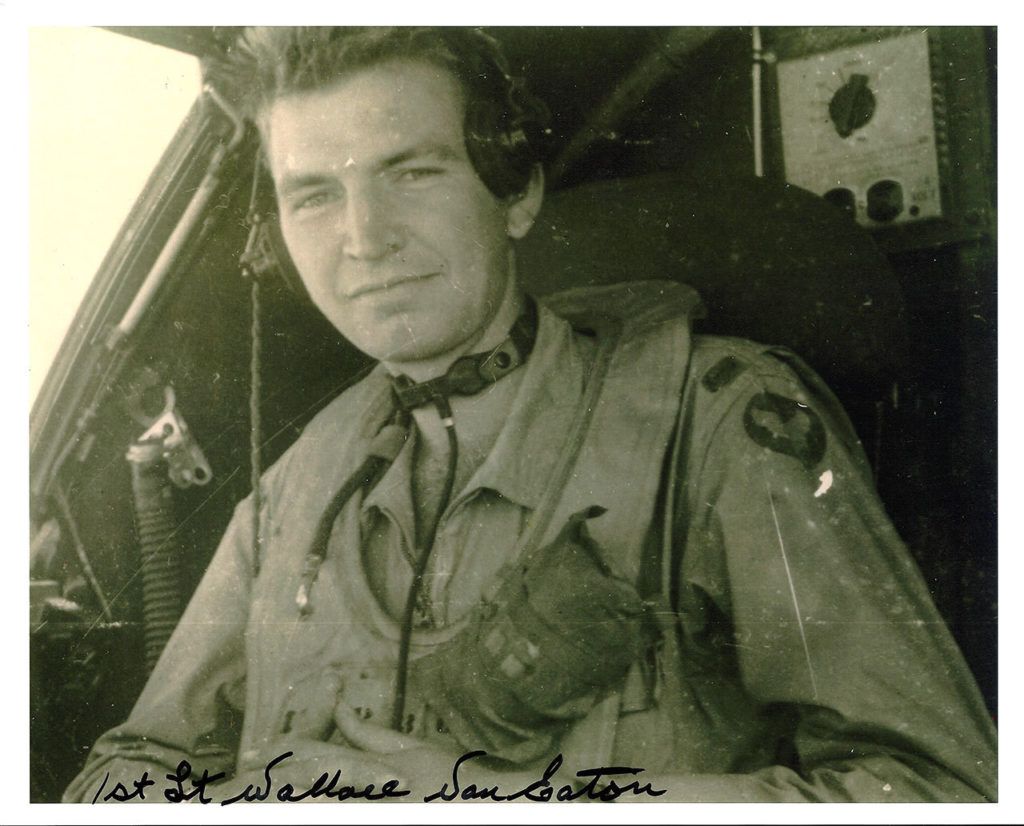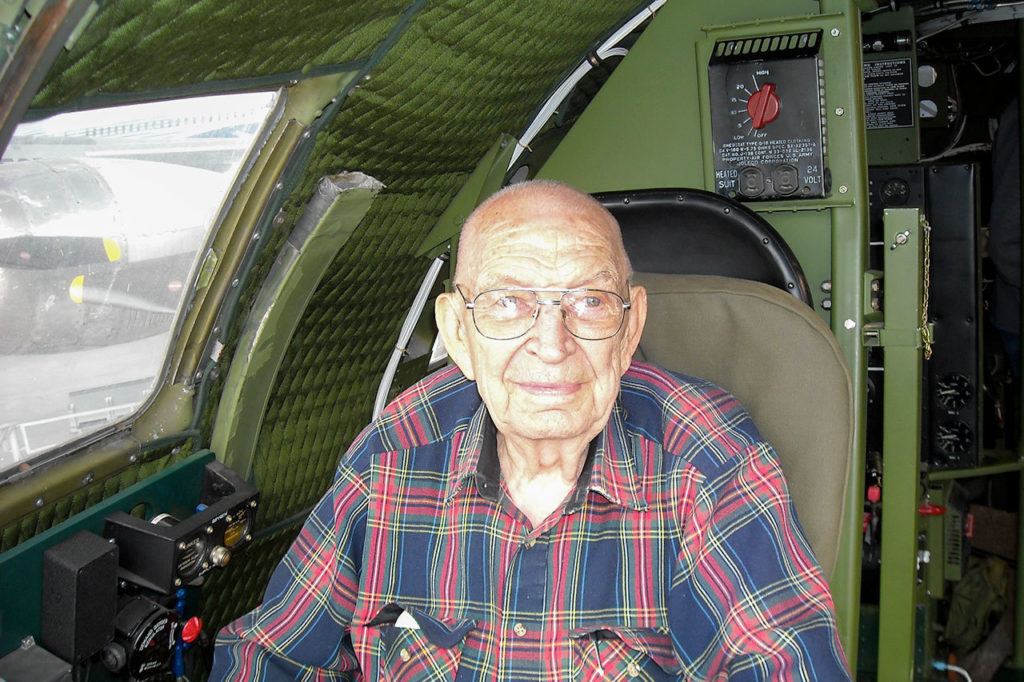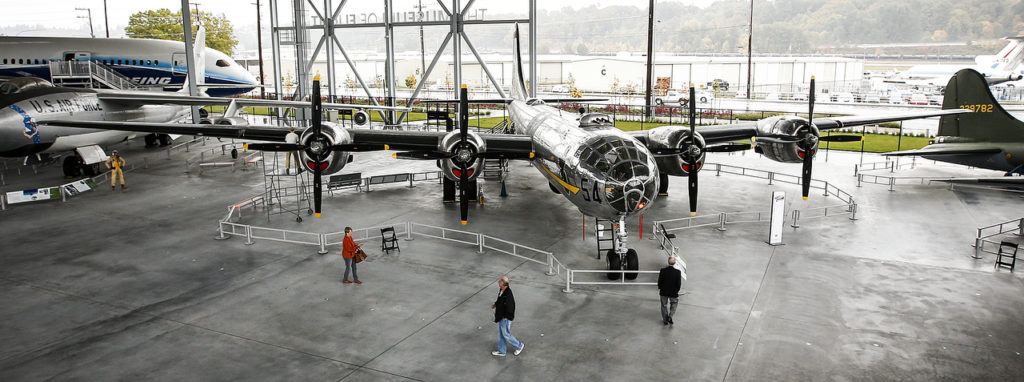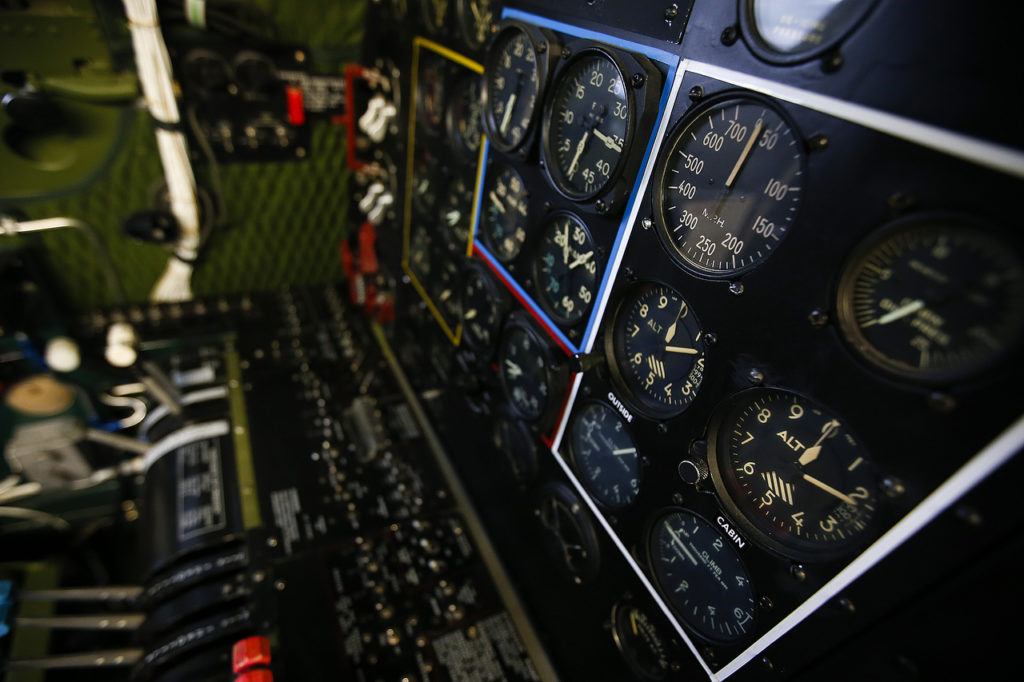SEATTLE — The 94-year-old man climbed the short ladder into the Boeing B-29 bomber’s cockpit and eased himself into the co-pilot’s seat. It was like seeing an old friend after years apart.
Wallace Van Eaton flew five of his 23 combat missions in World War II as a co-pilot on the bomber — dubbed T-Square 54. After the war, “I just figured I’d never see the plane again,” he said.
In April, T-Square 54 went on public display in the Museum of Flight’s new Aviation Pavilion, after more than 20 years of restoration work by an army of volunteers. Last month, Van Eaton traveled from his home in Yakima to see the airplane that he and his crew entrusted with their lives as they took the war to Japan.
“Sometimes we had enemy fighters over, around and under us, shooting at us,” he said. At other times, anti-aircraft fire from guns below filled the sky.
“I saw a lot of planes shot down. We just kept going and had to put our trust in the Lord,” he said. “And I’m still here.”
The United States’ strategic bombing campaign against Japan was a numbers game. The U.S. Army Air Force put enough of B-29 Superfortresses over targets enough times to ensure destruction. To get the bombs on target, the planes had to forget about the fighters and bursting anti-aircraft shells, and fly on course.
“We would have loved to get out of there,” Van Eaton said. But “we just had to let the bombardier do his job — and finish the job.”
Van Eaton was born in Shellbrook, Saskatchewan — a small town in Canada’s remote interior — to American parents. His family moved to Yakima, where he went to high school. After graduation, he started at a two-year college in rural Iowa.
The war cut short his college career, as it did for countless others at the time. Van Eaton figured he’d be drafted sooner or later, so he might as well sign up, he said.
He and his little brother, Jack, took the entrance exam for Army flight school.
“He passed it and I flunked,” Jack said. “He flew and I walked.”
The younger Van Eaton, who now lives in Bothell, joined the infantry and slogged his way through Western Europe. He was wounded twice, and in 2015, he was made a chevalier (or knight, in English) in France’s Legion of Honor. It is that country’s highest military and civil decoration. Jack Van Eaton was recognized for his actions during the Battle of the Bulge.
After flight school and additional training, Wallace Van Eaton was sent to a B-29 replacement crew as co-pilot. The crew was assigned to the 875th Bombardment Squadron of the 498th Bombardment Group, which was stationed on Saipan. B-29s on the island and its neighbor, Tinian, flew bombing missions against Japan’s home islands.
Van Eaton’s crew went to Boeing’s plant in Wichita, Kansas, to pick up a new Superfortress, which they would fly to Saipan. The plane they picked up was T-Square 54. It took several days and stops to reach the island.
T-Square 54 was used as a backup plane, so it never was assigned to a specific crew. That meant it was never named or given distinctive nose artwork. Its name refers to the identification insignia on its tail: a giant T and a square for its bomb group, and the number 54.
The plane flew 37 combat missions, including the five flown by Van Eaton’s crew.
After the war, he finished college and moved to San Antonio, Texas, where he met Maurine Webb. They married in 1947. Eventually, they moved to Yakima, where Van Eaton worked as a chiropractor and the couple raised their daughter and two boys. Maurine died in 2013, shortly after her 94th birthday.
Van Eaton has only flown one time since leaving the military. But his wife was an avid pilot.
“She took me up once. That’s the only flying I did after the war,” except as a passenger on a commercial flight, he said.
Few of the nearly 4,000 B-29 Superfortresses built have survived. After the war, T-Square 54 was converted into an aerial refueling tanker and used as a weather observation aircraft before being mothballed in the desert, along with hundreds of unwanted warplanes in the late 1950s.
Three decades later, T-Square 54 was sent — in pieces — to Lowry Air Force Base in Colorado, where a team of volunteers did initial preservation work. When the base closed in the mid-1990s, the National Museum of the United States Air Force gave the aircraft on a long-term loan to the Museum of Flight. Since then, volunteers have spent tens of thousands of hours restoring the sleek airplane as close as possible to how it looked when it rolled out of the factory in late 1944, said Dale Thompson, one of the volunteers leading the effort.
Since 2003, he figures he has spent more than 5,000 hours on the airplane. It sat for several years sheathed in bright white shrink-wrap to protect it from weather while volunteers worked on its interior. It went on public display earlier this year in the Museum of Flight’s new Aviation Pavilion, parked between two other Boeing bombers — a B-17 Flying Fortress and a B-47 Statojet.
Those three airplanes cover the Boeing Co.’s evolution into a maker of big jet planes. By the mid-1930s, the company was struggling to stay afloat when Boeing President Claire Egtvedt focused the company on making big airplanes. He staked Boeing’s future on the B-17 and greenlighted work that led to the B-29.
The Superfortress was the most technologically advanced big airplane of its day and could fly higher, faster and farther with more bombs than any other plane at the time. It had a fully-pressurized cabin and rudimentary computers for aiming its machine guns at attacking enemy fighters.
However, it was hurried through development and into combat. Many early B-29s were lost to engine fires, a problem that was addressed by the time T-Square 54 rolled off the assembly line at Boeing’s Wichita plant in late 1944.
T-Square 54 is a “highlight of the collection,” said Tom Cathcart, the Museum of Flight’s interim curator. He works at the museum’s Restoration Center in Everett, where several of the B-29’s major components were refurbished. It is the only B-29 with a functioning gun computer system today.
“It’s probably one of the most popular aircraft with visitors from Japan,” he said.
Restoration work continues. On Wednesday, Thompson was crawling around the tail gunner’s cramped position, working on the tail gun’s sighting system. He was at the museum when Van Eaton visited in September.
“I walked up to him and he gave me a hug,” Thompson said. “He was so happy that we are taking care of the plane he flew.”
For the restoration team volunteers, “that’s our pay,” he said.
Dan Catchpole: 425-339-3454; dcatchpole@heraldnet.com. Twitter: @dcatchpole.
Talk to us
> Give us your news tips.
> Send us a letter to the editor.
> More Herald contact information.
